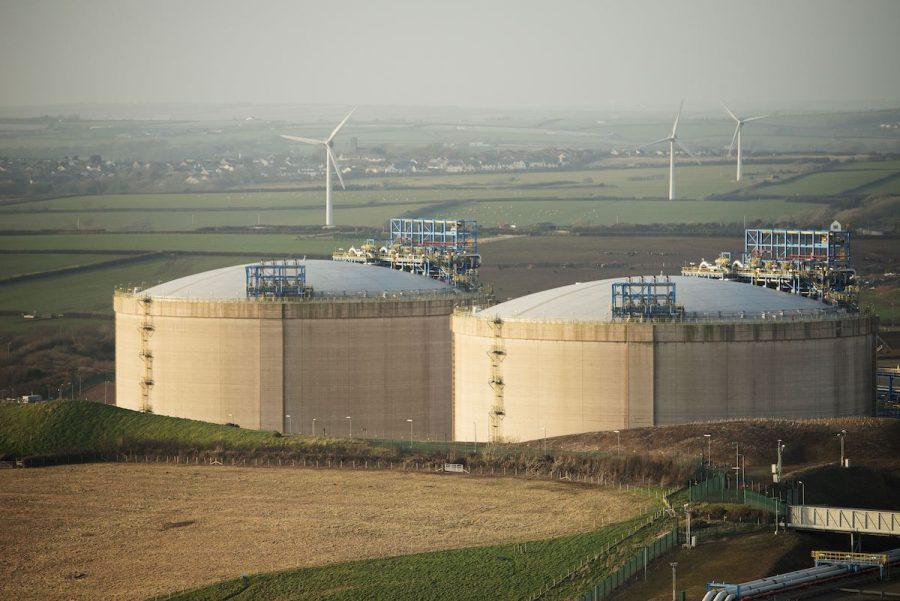Dragon LNG

Dragon LNG Ltd is our core business connecting LNG into the UK gas network for our LNG supply customers (currently Shell and Petronas) per a long term Customer Agreement.
Being a critical part of the nation’s energy infrastructure since August 2009, the terminal has the capacity to receive up to 96 LNG vessels a year and supply over 10% of the UK’s annual natural gas demand, providing a link between the UK and its overseas gas suppliers.
With the addition of our reliquefaction plant, completed in 2018, this facility provides Dragon LNG with the means to maintain zero-send out indefinitely, providing flexibility for suppliers into the UK to ensure security of supply.
What is Liquefied Natural Gas (LNG)?
We use methane for cooking and heating and generating electricity. It can also form the raw material for manufacture of a variety of products (clothing fibres and plastics for healthcare, computers and furnishings). When methane – a natural gas – is cooled to a temperature of approximately -160°C, at atmospheric pressure, it condenses to form a liquid: Liquefied Natural Gas (LNG). This process reduces the volume of gas by 600:1 enabling large quantities to be transported economically over long distances and to be sourced from many producing countries.
Methane is composed of one carbon and four hydrogen atoms, forming one of the cleanest, simplest and most abundant hydrocarbon fuels.
In its liquefied form (LNG) it is colourless, odourless and non corrosive. LNG is a clean fuel that, when burned, is virtually free of nitrogen dioxide and sulphur dioxide.
LNG has to be converted to gas and mixed with air in the right ratio for it to burn. LNG vapours are only flammable within an approximate concentration of 5 – 15% gas in air. Outside this range it cannot burn as either the fuel or air ratios are too low. LNG, as a liquid, will not explode or burn.
The LNG Process
Liquified Natural Gas (LNG) is transported to Dragon LNG from all over the world in special twin hulled ships. Maximum ship size acceptance is the Q-Flex type with a length, breadth and draft of 315m, 50m and 12.4m. Maximum cargo capacity is 217,500m3. Maximum unloading rate of 12,000m3/hr via 3no. unloading arms (18hrs for full cargo capacity). LNG is pumped from the ship and into the LNG storage tanks above, 2no. Full containment storage tanks each with a 160,000m3 capacity. LNG inner tanks are 9% nickel and housed in an external concrete tank for both insulation and impact protection. LNG is stored in each tank at -160°C. LNG is pumped from the tanks via Low Pressure pumps to the Process Area. Boil Off Gas is managed whilst LNG is in storage via a Reliquefaction Plant. LNG is regasified by warming the LNG to its natural gaseous state (5°C) through tube bundles in a Submerged Combustion Vaporiser (SCV). Up to 250,000 tonnes of CO2 per year can be emitted through this process. Natural gas is then pumped into the National Transmission System (NTS) at approx. 90Barg via High Pressure Pumps.
Commissioned in 2018 as the largest onshore Re-liquefaction plant (RP) in Europe. The boil-off gas can be diverted from the tanks through the RP which compresses, liquifies and returns the condensate back into the tanks. This enables flexibility for our customers to supply the NTS when it is required. BOG was previously burned through 3no. Gas Turbines and boilers and a Steam Turbine Generator which produced approx. 50MW of electricity.
Dragon LNG Projects
Milford Haven CO2 Project with RWE Pembroke Net Zero Centre.
CO2 capture at RWE Pembroke Net Zero Centre with transport via a pipeline transit to Dragon.
CO2 liquefaction, storage and shipping infrastructure at Dragon for shipping to carbon stores in the UK.
